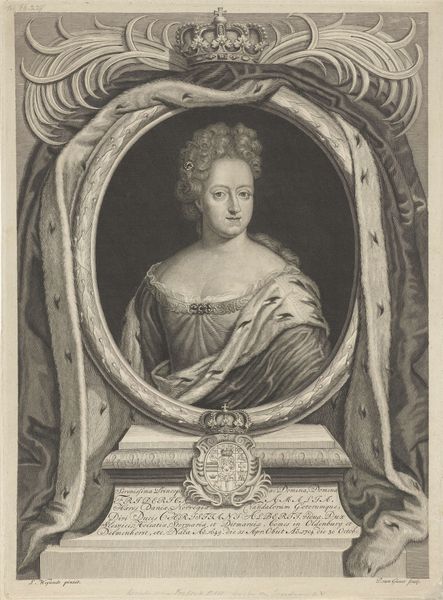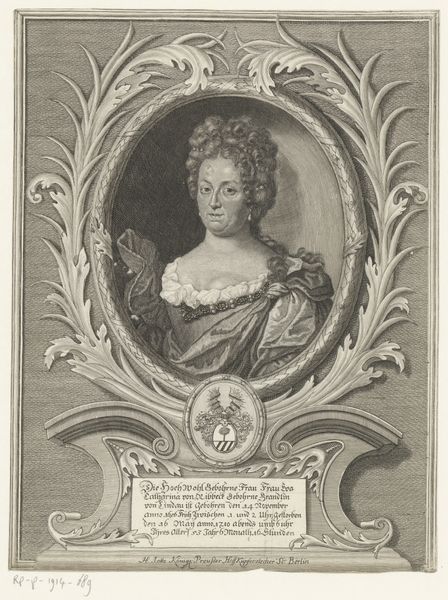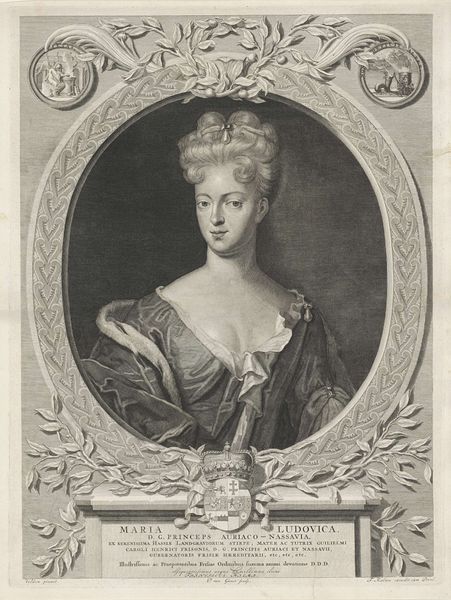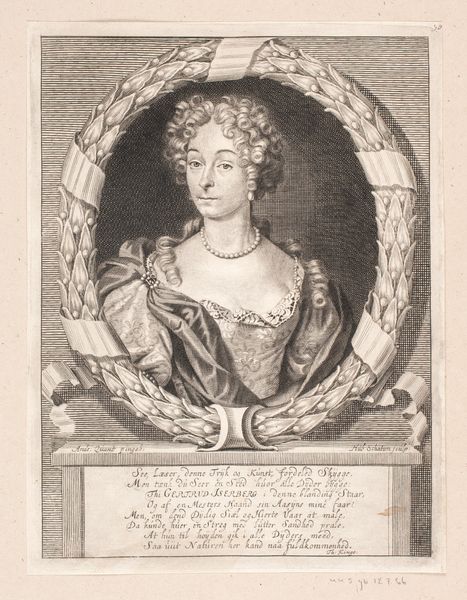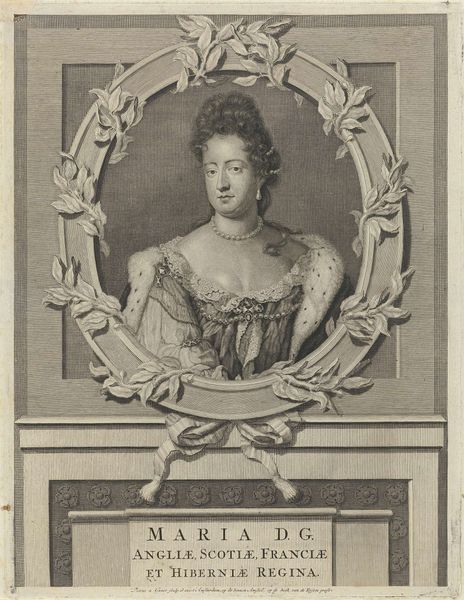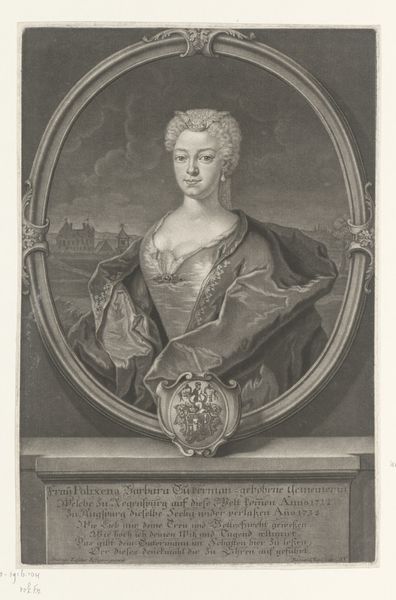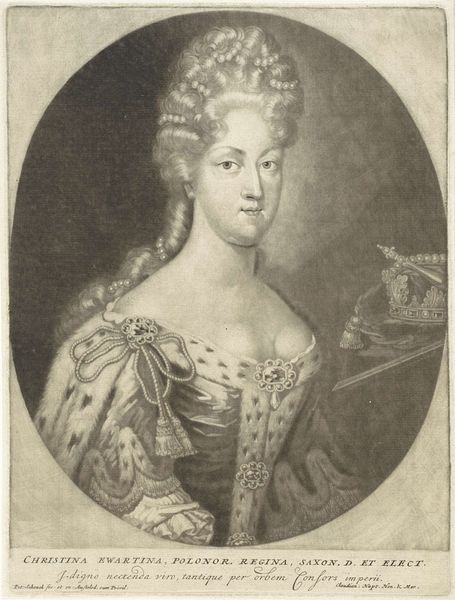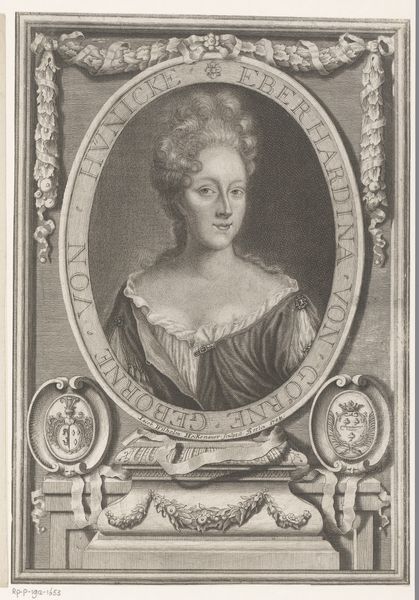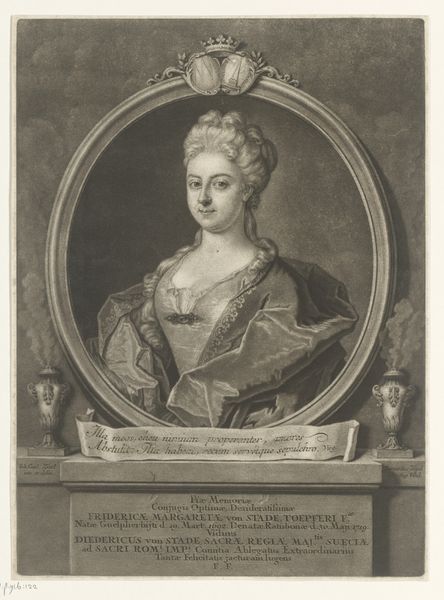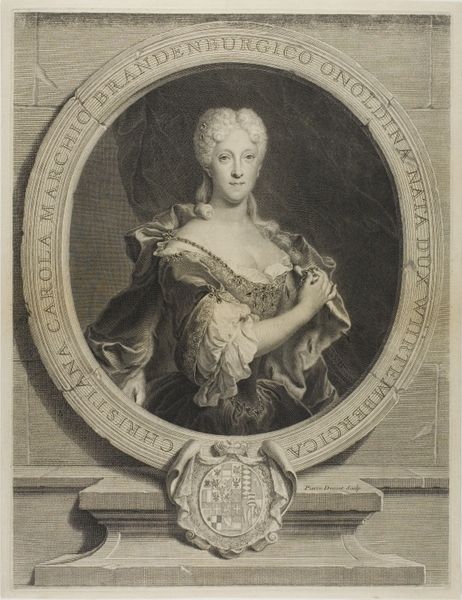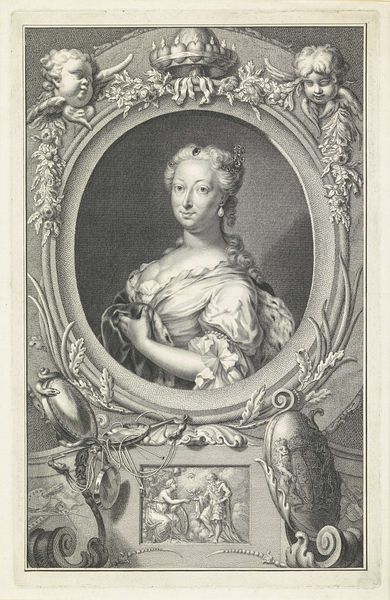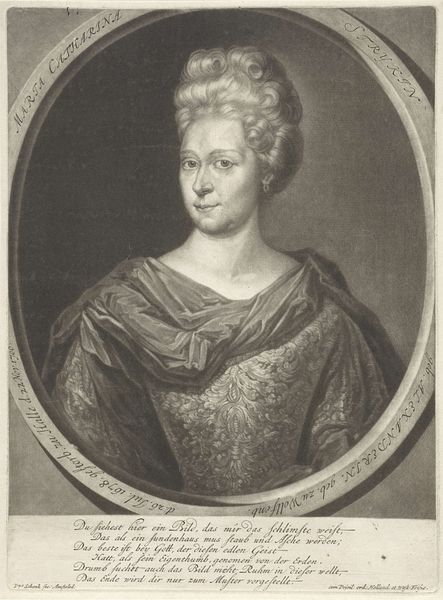
Portret van Maria Elisabeth, aartshertogin van Oostenrijk 1696 - 1721
0:00
0:00
janbaptistberterham
Rijksmuseum
engraving
#
portrait
#
baroque
#
old engraving style
#
pencil drawing
#
portrait drawing
#
history-painting
#
academic-art
#
engraving
Dimensions: height 288 mm, width 192 mm
Copyright: Rijks Museum: Open Domain
Curator: Before us is an engraving from the Rijksmuseum collection. It is titled “Portret van Maria Elisabeth, aartshertogin van Oostenrijk” – “Portrait of Maria Elisabeth, Archduchess of Austria,” created sometime between 1696 and 1721, by Jan Baptist Berterham. Editor: It strikes me as very formal, almost austere. The woman's expression seems quite stern, doesn’t it? Curator: Absolutely. Engravings in this style often served a very specific socio-political function. Note the circular frame, almost like a coin or medal of honor. These images weren't just about likeness; they were about conveying power and legitimacy. Editor: The crown in the upper-left background alludes to status as well. And, of course, the ornate dress, though the details seem almost softened. What’s fascinating is how symbols persist and are repurposed through different eras, and it's really a display here of rank and nobility, like an old Roman coin. Curator: Precisely. The visual language of Baroque portraiture aimed to inspire respect and, perhaps, a bit of awe. Notice the inscription circling her image: "Elisabetha Maria Archidux Austriae Belgii Gubernatrix” It clearly marks her authority as governor of the Austrian Netherlands, modern-day Belgium. These details, from the text to the heraldry displayed on the tablet under the oval portrait frame, worked to solidify Habsburg power. Editor: Do you think this imagery had more effect for public perception, versus today's world filled with portraits? The Habsburgs clearly understood how visual media shapes the populace's opinions and what cultural memories would later develop. Curator: Yes, in the 17th and 18th centuries these prints were a powerful tool, circulating ideas about governance and imperial identity, at the time far more widespread than paintings or sculpture would've been. Editor: Looking at this piece now, I see a kind of ancestor of contemporary political image-making. Curator: A very apt point; the core concept remains - images construct identities and solidify power dynamics. It makes you wonder about the continuities from Maria Elisabeth to the present day.
Comments
No comments
Be the first to comment and join the conversation on the ultimate creative platform.
